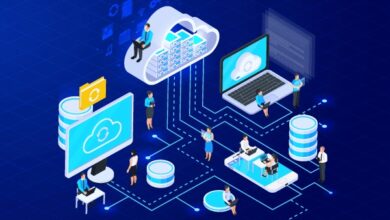
CIOs have performance metrics correlated with the sustainability of the IT organisation, so it shouldn’t come as a surprise they only see only their own slice of the world. According to Gartner, it’s not recommended to focus on the sustainability of the internal operations of the company exclusively. In the opinion of the experts, it’s necessary to enable a multitude of outcomes using technology. So, the question now is, what is sustainable technology? Sustainable technology is a mixture of digital solutions that consider natural resources and fosters economic and social development. The innovations in technology help minimise environmental impacts and save resources from further depletion.
Sustainable technology generates opportunities in functional areas of business, such as internal IT, enterprise, and customer operations. Contrary to popular opinion, technology isn’t the key to sustainability. It’s just one piece of the puzzle, but it’s vital. Sustainability entails a radical transformation of individuals, processes, and data, so even if the market is advancing at a fast pace, no platform or vendor can do all the work for you. For the time being, you must identify the approach that best suits your needs and wants. If done right, it will support the results you hope to maintain as your organisation grows.
Sustainable Technology Does More for The Business Dynamic Than Merely Helping the Environment
On account of the rise in environmental concerns, sustainable technology has attracted considerable amounts of investment capital and accommodates major environmental initiatives. For example, cardboard balers play an important role in waste management and recycling efforts across various industries, streamlining the process and making it more climate-friendly. With more people shopping online and more packaging coming to homes, at times, collection services are struggling to handle the increased volumes of cardboard. Compressing the renewable resource helps maximise the available space in the recycling bin, which in turn contributes to a more circular economy. For the best recycling equipment, click to visit MilTek’s official website.
Sustainable technology helps boost your efficiency, productivity, innovation, and your business’s bottom line. For example, if you take advantage of renewable and biodegradable materials, you protect your company from the disastrous effects of climate change, which can cause significant disruption and make it hard, if not impossible, to get insurance. If you’re struggling to attract and retain top talent, you’re better off implementing sustainable technology than building a culture of corporate empathy. People are attracted to companies that focus on sustainability as part of their business strategy because they seek purpose in their lives. Meaningful work is something everyone wants.
These Technologies Will Have the Greatest Impact on Business and Society
At the end of the day, sustainable technology integrates well-established and leading-edge technologies, such as:
Cloud Computing to Reduce Reliance on Energy-Heavy Practices
Almost all companies use services that are connected to or run in the cloud, as it eliminates the need to host digital applications on their own servers. Businesses can serve customers and launch products in a timely fashion. Undoubtedly, the cloud continues to evolve, reducing energy consumption and cutting down on carbon emissions. Moving the IT systems to the cloud consolidates the overall number of data centres and better supports working remotely, leading to lower resource consumption and fewer greenhouse gas emissions. Cloud providers are turning green and implementing net-zero practices, envisioning efficient processing and utilisation of computing infrastructure.
For successful sustainable cloud migration, opt for a provider with a demonstrated history of delivering thoughtful, well-designed data centres, balancing desire with growth ambition, and becoming committed to innovation. Sustainability goals mean nothing without practical action. Green cloud computing maximises energy efficiency during devices’ lifecycles, promotes the use of recyclable materials, and reduces the use of perilous IT components. A sustainable cloud approach involves a degree of modernisation of current applications, therefore, creating a multi-stage process that takes time and resources to finalise. Given that sustainability is front for most businesses, every company will consider green cloud computing a priority.
Smart, Modern Software for Impact Measurement
By measuring your impact, you can pinpoint and control the risks and opportunities closely related to your social and environmental efforts. Not only can you report your findings to your stakeholders, but you can also learn from the results to inform decision-making and strategy. With impact measurement and management software, you can understand your long-term impact and use the data to set more sustainable goals. Conducting any type of study is a time-consuming, resource-intense process, which requires specialised expertise to produce actionable results. Even if the research is robust and sound, it might not be practical or agile. Software can help you measure and communicate your impact on the world.
Technology For Working Remotely
At present, companies are experimenting with different models of remote work because employees who work from home have a lower environmental impact than their in-office peers.
Owing to digitalisation, there’s a reduction in paper use, which minimises the negative environmental impact caused by cutting down trees and keeps millions of tons of waste out of the landfills. The digitalisation of companies plays an important part in short-term and long-term sustainability goals. Sustainable digitalisation supports and enables the transition to a green economy by leveraging innovative small and medium-sized enterprises and their business ecosystems. Getting back on topic, instead of handing out paper documents, important information should be compiled into a shared, accessible folder that is updated at regular intervals.
Working remotely helps eliminate a great deal of expenses, such as heating and electricity costs and telephone or internet expenses. Most importantly, working from home eliminates the daily commute that pumps tons of carbon dioxide into the atmosphere every year. The hybrid work model is gaining traction, as many employees choose to return to the office. Top advantages include but aren’t limited to improved work-life balance, less work burnout or fatigue, and more connection to the organisation’s culture. Some jobs can be delivered from a distance, while others can’t. Each company will have a singular approach, but you’ll most likely need tech solutions like communication and collaboration tools, people analytics, and document management, to name a few.
Conclusion
To conclude, it’s necessary to look at the bigger picture and grasp how your actions can fit into the larger world.




